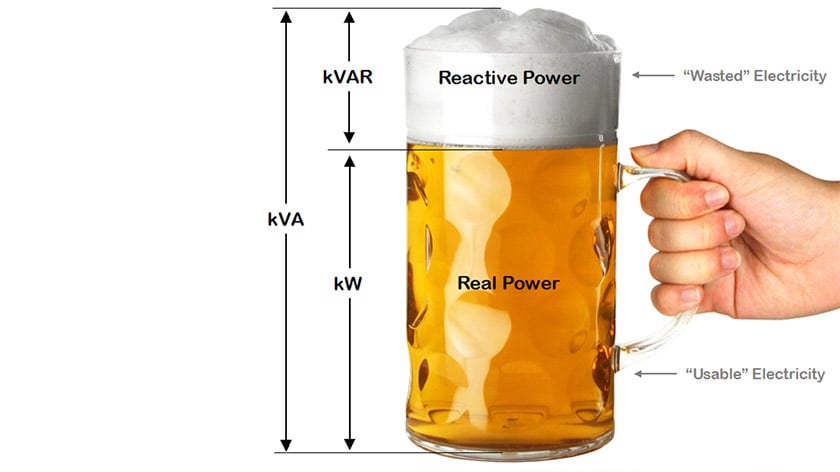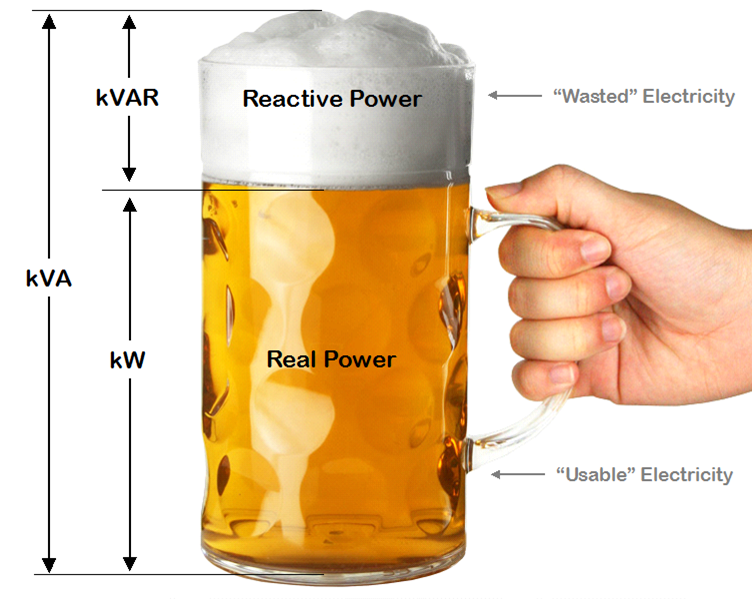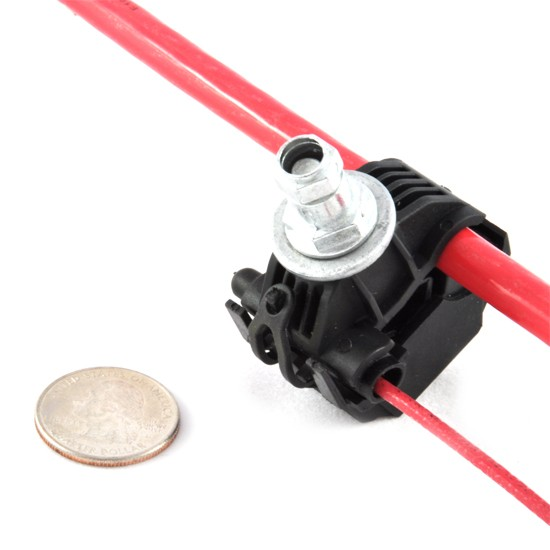Installing Packet Power Smart Power Cables [VIDEO]
Monitoring the power usage of any device that with a plug is simple with Packet Power’s Smart Power Cables. Just how easy is it? This short video...
2 min read
![]() Paul Bieganski
:
Sep 9, 2021 8:45:00 AM
Paul Bieganski
:
Sep 9, 2021 8:45:00 AM

You may be getting less power throughout your facility than you think, thanks to something known as power factor. Power factor affects power management, especially if you’re running very high power equipment such as an uninterruptible power supply (UPS). Power factor also affects accurate cost measurement since you are effectively getting less usable power than you’re paying for. So it pays to understand power factor and how it affects your operations.
Power factor definition
Power factor is the ratio of true power (actual power consumed) to apparent power (total power delivered). In a Direct Current (DC) power system, the voltage is constant and the power factor is generally a non-issue. With Alternating Current (AC), there is an inherent drop in usable power that occurs due to the way AC works.
Power factor explained
Most data centers operate on Alternating Current (AC) power, which flows in two directions. The current within an AC system flows in one direction, reverses, flows backward and then forward again 50 or 60 times a second, depending on what country you’re in. That means that voltage and current in an AC system fluctuate back and forth between positive and negative. Since the power being delivered is the product of voltage and current, it will fluctuate as well.
If voltage and current were perfectly synchronized you could simply multiply the average voltage by the average current to calculate the correct average power being delivered. Unfortunately, there are situations where voltage and current get out of sync -- voltage is high but current is low, or vice versa. This is why you may be getting less power than you think.
Picture a freshly-poured draft beer. You ordered a pint and paid for a pint, yet you won’t get a full pint to drink because there will be some frothy foam at the top. The more foam, the less beer, which means less value for your money.

The difference between apparent and true (or real) power
Here's how it works in your data center
Power factor identifies value received
A power factor of 1.0 is considered ideal because it occurs when voltage and current are completely in sync. This is unlikely in an AC power system, so your power factor will be lower than 1.0. The lower it is, the more inefficient (wasteful) your power consumption.
In order to precisely measure power, voltage and current must be measured and multiplied at exactly the same instance, many thousands of times a second. That’s how power monitoring equipment measures “true power.”
In a data center with modern power conditioning equipment and power supplies, you will rarely see circuits to IT devices with a power factor lower than 0.9. However, this is significant enough to make true power measurement essential when it comes to cost measurement and for managing very high power devices.
Reference our Volts, Amps, Watts, Watt-hours and Cost post for a refresher on electricity.
Email info@packetpower.com if you need help measuring your true power. Packet Power wireless monitoring solutions are easy to install, affordable and accurate.
![Installing Packet Power Smart Power Cables [VIDEO]](https://www.packetpower.com/hubfs/Blog/Packet%20Power_Smart%20Power%20Cable%20Install.jpg)
Monitoring the power usage of any device that with a plug is simple with Packet Power’s Smart Power Cables. Just how easy is it? This short video...
![Monitoring Made to Measure Simplifies Power Monitoring [VIDEO]](https://www.packetpower.com/hubfs/Blog/Monitoring%20Made%20to%20Measure.jpg)
Your power monitoring needs are unique. You need a system built specifically to meet these needs. Sound expensive? Packet Power’s "Monitoring Made to...

Packet Power is frequently asked how to access the voltage source when installing power monitors. This can be done using a variety of methods.